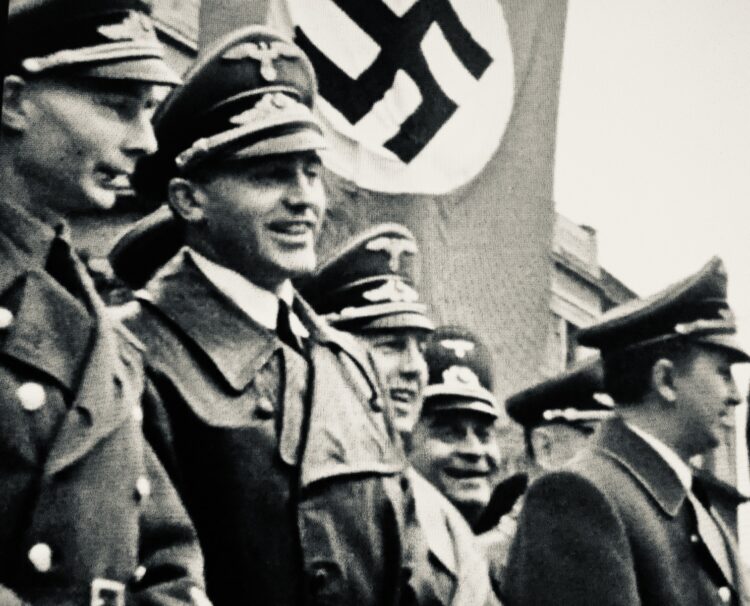Sergei Loznitsa’s understated yet compelling movie, Babi Yar: Context, documents the monstrous German occupation of Ukraine, a province of the Soviet Union until its independence in 1991.
To be screened online by the Toronto Jewish Film Foundation from November 10-13, it puts the Babi Yar massacre of 33,771 Ukrainian Jews in September 1941 into perspective.
Composed of graphic German and Soviet newsreels, this exemplary documentary is a searing indictment of Nazi war crimes. The German invaders, though focused on murdering Jews and Communist functionaries, ransacked and pillaged Ukraine, killing countless civilians.
The film, bereft of narration, relies on periodic captions to explain unfolding events. Loznitsa’s method is questionable, but the overall effect is never less than chilling.
Germany invaded the Soviet Union on June 22, 1941, violently breaking its 1939 non-aggression pact with Moscow. As the film opens, German tanks and trucks roll into a Ukrainian town and several of its residents thrust bouquet of flowers at the triumphant soldiers. It’s plain to see that Ukrainian nationalists are pleased by the German conquest.
Red Army troops by the thousands abjectly surrender. “What are we going to do with them?” a German soldier wonders out loud.

The scene shifts to Lviv, or Lemberg, in western Ukraine as elated Ukrainians greet the Germans with clapping and cheering. They are placing their hopes on Germany’s recognition of an independent Ukraine, an event which never materialized.
Ukrainian collaborators round up and beat Jews and strip Jewish women of their clothes.
As the Germans march deeper into Ukraine, they use flame throwers to burn down the thatched roof homes of villagers. With the Germans approaching Kiev, the capital, soldiers and civilians erect anti-tank barriers and fill sand bags.

Back in Lviv, the German governor of occupied Poland, Hans Frank, watches a parade of Ukrainian women in traditional folk costumes. Some toss flowers at him, and he smiles.
A debris field of Soviet military vehicles appears, conveying the unmistakable impression that the Germans are winning the war. On September 19, they occupy Kiev. Russian prisoners-of-war in civilian clothing are released by the Germans and instructed to return to civilian life. Somewhere in the city, a man pastes a German poster on a wall reading “Hitler the liberator.”
Explosions rock Kiev. Holding Jews responsible for the blasts, the Germans order them to present themselves in northwestern Kiev toward the end of the month.

The poster reads: “All the Yids of Kiev and environs are to gather on Monday, September 29 at 8 a.m. near the cemetery … The Yids who disobey the order … will be shot.”
In the next two days, in the single biggest massacre of the Holocaust, more than 30,000 Jews are shot in the Babi Yar ravine by Sonderkommando 49, assisted by a police regiment and Ukrainian auxiliary police.
A few days later, the Ukrainian newspaper Kiev Now reports that the city has been “liberated from Oriental barbarians” and can “breathe freely” again.
In a parade, pro-German Ukrainians pay homage to Hans Frank.

Around the same time, the Jewish inhabitants of Lubni are ordered out of the village. They are fated to be murdered, along with hundreds of thousands of Ukrainian Jews.
The Soviets recapture Kiev on November 6, 1943, and Ukrainians scurry to curry favor with Moscow. In a sign of the times, a man scrapes a poster of Hitler off a wall.

American journalists visit Kiev in the same month and are given a tour of Babi Yar. In accordance with communist ideology, the Jewish victims are described as “Soviet citizens.”

By 1944, the Wehrmacht is in full retreat as the Soviets launch an offensive on land and in the air. German corpses litter a snowy field.

The Red Army reaches Lviv in July of that year. The Germans are on the cusp of defeat.
These vivid snapshots of the war in Ukraine comprise the bulk of Babi Yar: Context, a film that brings home the cruelty and barbarity of Nazi aggression in the Soviet Union.
